Ask Ethan #52: How long has the Universe been accelerating?
If we came to be just a few billion years earlier, we’d never know.
Image credit: Jean-Charles Cuillandre (CFHT) & Giovanni Anselmi (Coelum Astronomia), Hawaiian Starlight.
“After all the ‘Universe’ is a hypothesis, like the atom, & must be allowed the freedom to have properties & to do things which would be contradictory & impossible for a finite material structure.” –Willem de Sitter
Each week for a full year now, I’ve been encouraging you to send in your questions and suggestions, and I’ve chosen my favorite one to make it the subject of our weekly Ask Ethan column. We’ve taken on topics from the smallest scales to the largest, from the Earthly to the cosmic, and from the start of the Universe to its ultimate fate. This week, I got a question from Hemza Azri, who wanted to know the following:
I’m trying to know whether there are new observational indications about the accelerated phase of the universe! When did it start?!
Let’s talk about the Universe, and just how it expands.
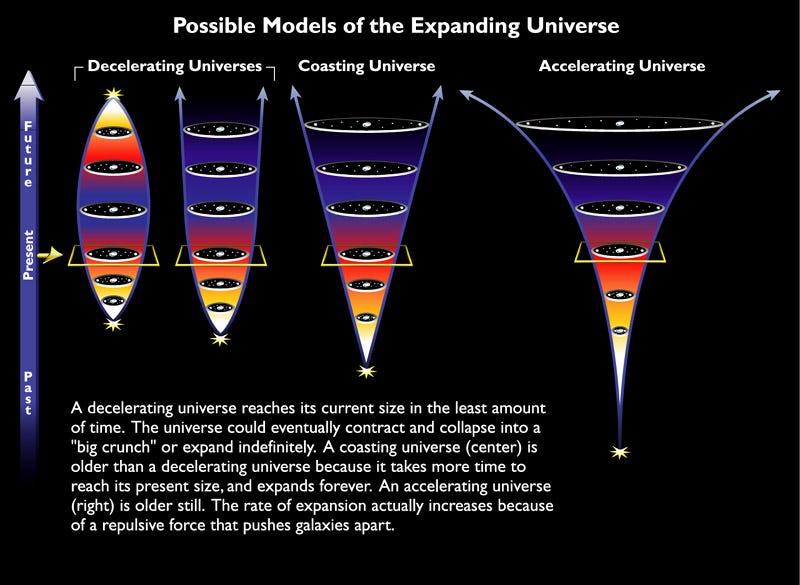
It was less than 100 years ago that we learned that these great spiral nebulae in the skies were not proto-stars forming in our own galaxy, but rather entire galaxies unto themselves, millions-to-billions of light years distant. Almost immediately after this discovery was made, however, we realized that there was an impressive relationship between how far away a galaxy was and how quickly it appeared to be moving away from us!
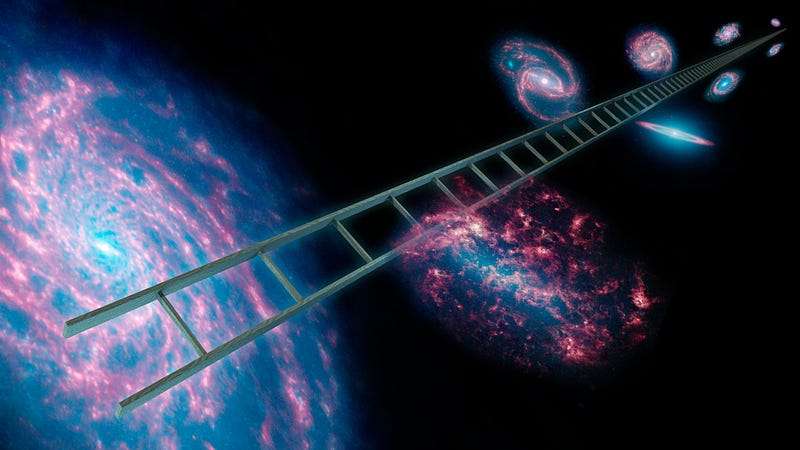
Although there were only a few exact solutions known at that point in General Relativity, one of them happened to be one that described our Universe very well: an expanding Universe that was uniform on the largest scales. Although our Universe isn’t at all uniform on scales of a few tens of millions of light years, when we begin to look on scales of tens of billions of light years, the departures from uniformity are very small. On average, this solution — the Friedmann-Lemaître-Robertson-Walker metric — describes our Universe better than any other.
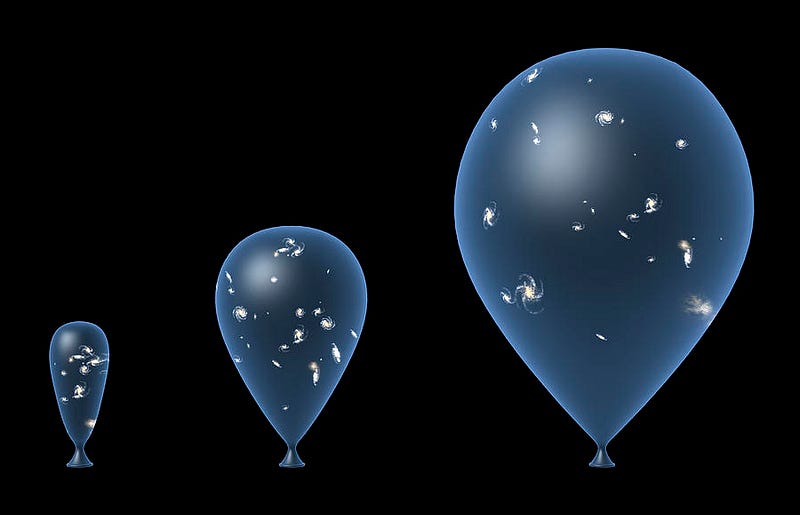
What it tells us is that space between galaxies — or between any structures that aren’t gravitationally bound to either one another or mutually bound to an even larger structure — is going to expand. If we want to learn how that space is going to expand, meaning at what rate, we need to know two pieces of information:
- What the expansion rate is at any point in our cosmic history, and
- What types and ratios of matter-and-energy are present in our Universe.
That’s it! If we can figure out those two pieces of information, we can figure out not only the fate of our Universe, but what the expansion rate was, is and will be at all times since the Big Bang.
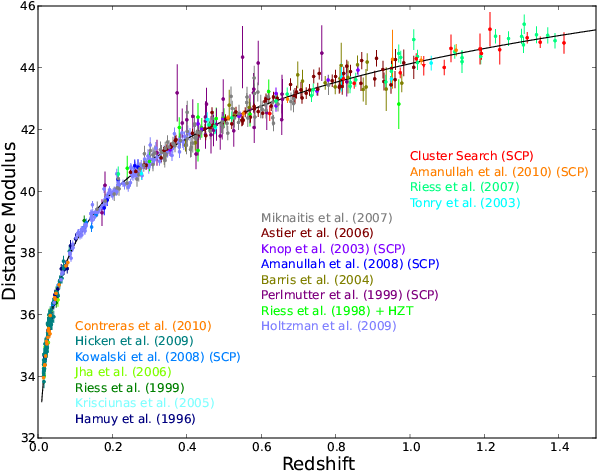
The first one is pretty straightforward, and we have a bunch of different ways to approach this problem. By measuring how far away various objects in our Universe are and how quickly they’re moving away from us, we can figure out what the expansion rate is today. That’s only one point, but it’s an easy one to get. Although the rate itself was controversial for a long period of time up through the 1990s, we’ve definitively established that it’s more-or-less around 67 km/s/Mpc (where an Mpc is about 3,260,000 light-years), with an uncertainty of only around 2 or 3 km/s/Mpc.
And the second one is something we’ve learned from a combination of many different types of observations as well, including from very distant objects like supernovae, from the cosmic microwave background, and from large-scale structure in general and particularly from baryon acoustic oscillations.
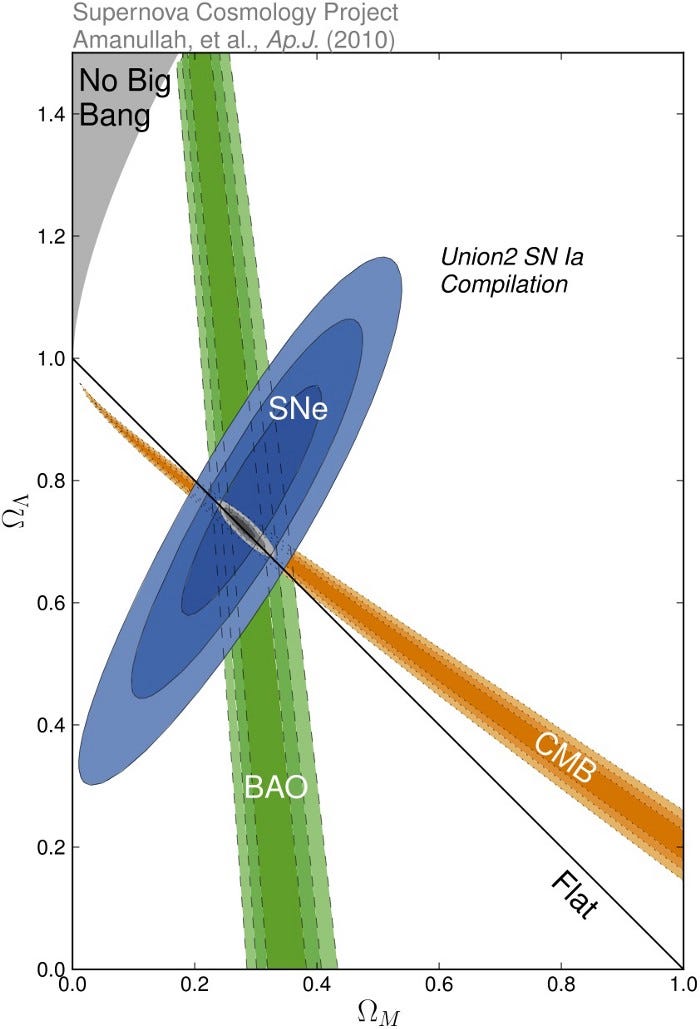
What we’ve come up with is an understanding that our Universe consists of approximately the following energy distribution:
- About 0.01% in the form of photons, or radiation in the form of light,
- About 4.9% in the form of normal, proton-neutron-and-electron based matter,
- About 27% in all forms of dark matter combined, including neutrinos, which themselves make up about 0.1% of the total, with the rest being of an unknown composition,
- And the remaining 68% or so in the form of dark energy, which to the best of our observations appears to be indistinguishable from a cosmological constant.
That’s what, to the best of our knowledge, the Universe is made of.
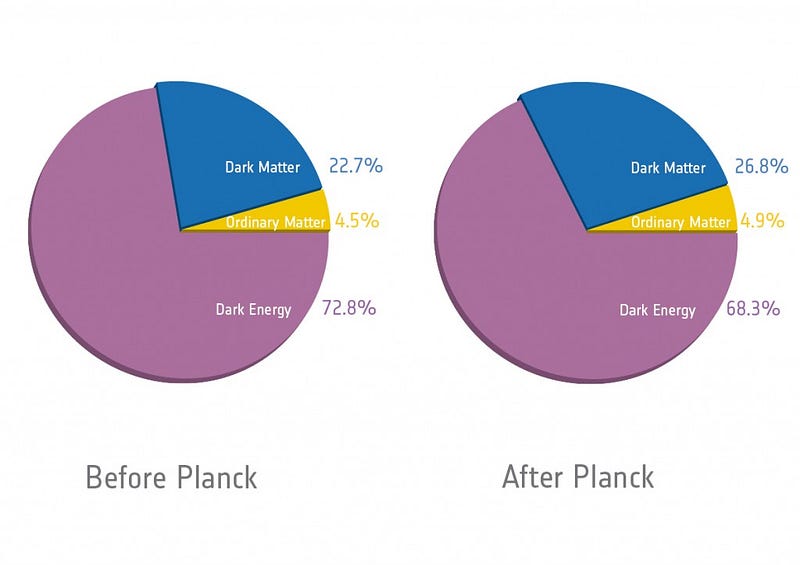
Now, when we talk about the Universe accelerating, we mean something very specific by this. We don’t mean that the current expansion rate — which clocks in at 67 km/s/Mpc — is getting faster; it isn’t. What I want you to think about is a distant galaxy, an arbitrary distance away from us. Let’s just make up a distance so we get an example number: 10 Mpc, for an expansion rate of 670 km/s.
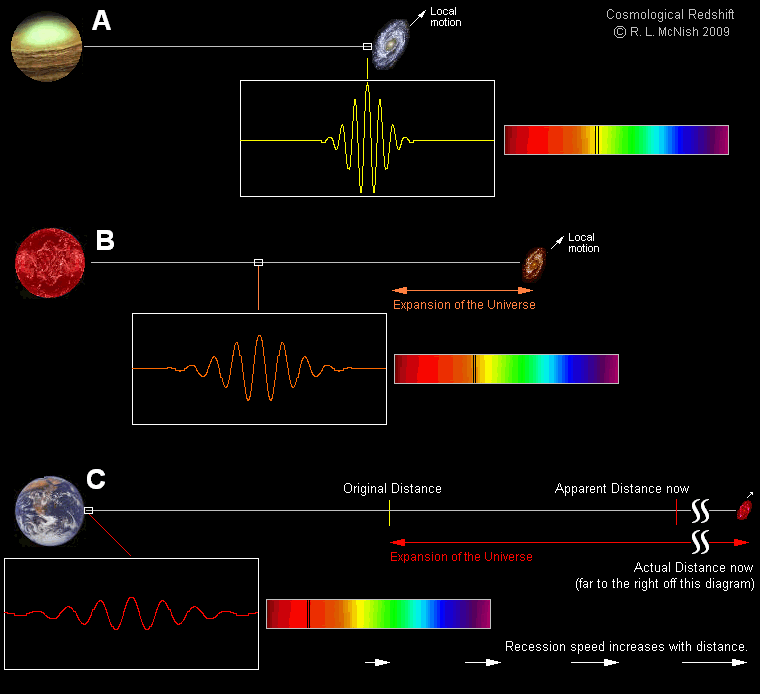
That’s how fast a particular galaxy moves away from us. Now, as the Universe continues to expand, it gets less dense, and therefore the energy density drops. Because the expansion rate is dependent on the energy density, it also drops. But because the Universe has been expanding over this time, the galaxy we’ve been watching is farther away from us now.
Think about what this means: the expansion rate is smaller in the future, but the individual object is farther away. If we want to figure out an object’s apparent speed as we move forward in time, we need to multiply those two numbers together, so it’s a question of what’s changing faster: is the expansion rate decreasing at a greater percentage than the object is increasing its distance from us, or vice versa?
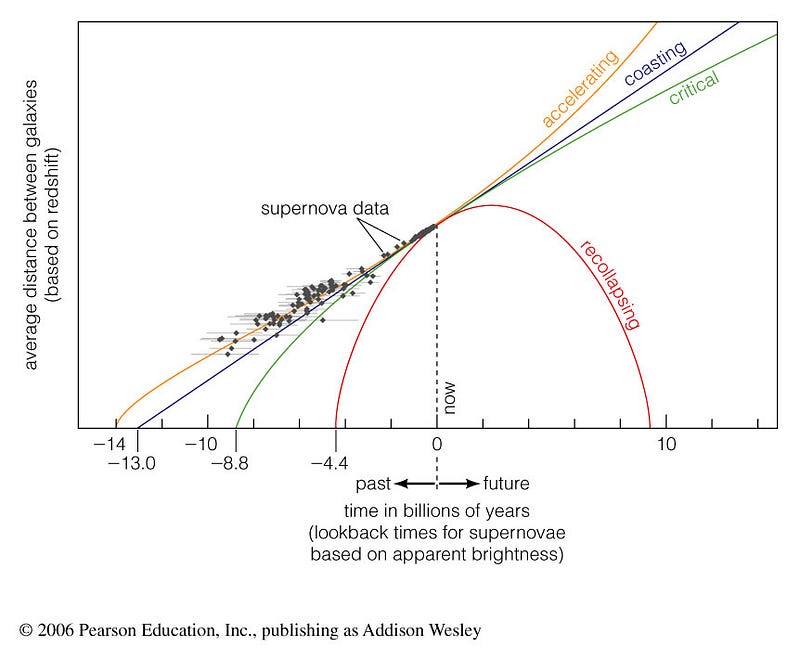
What that depends on is what percentage of the Universe’s energy density is in the form of matter-and-radiation, which both dilute over time, and what percentage is in the form of a cosmological constant, which doesn’t! Let’s take a look at how matter, radiation and dark energy (the cosmological constant) change over time.
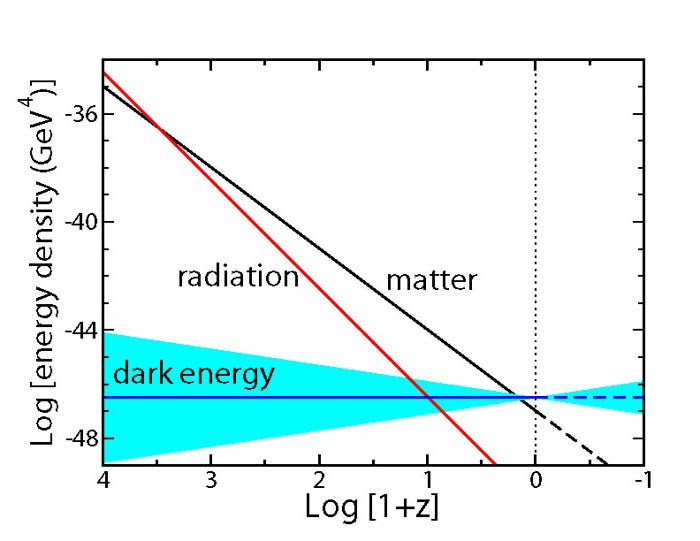
Right now, our Universe is dominated by dark energy, and so the expansion rate drops more slowly than the distance increases: by time the expansion rate drops by another 10%, the object will be approximately twice as distant from us, meaning that it’s accelerating. But in the past, the Universe had a much smaller amount of dark energy (percentage-wise) and a much larger amount of matter. If we go back far enough, radiation overtook them both! During either matter-or-radiation domination, the expansion rate dropped faster, and the Universe was decelerating. At our present age of 13.8 billion years it’s only relatively recently that the objects receding from us began to speed up, or accelerate!

Mathematically, the transition from deceleration, which is what the Universe was doing for the first few billion years, to acceleration, which it’s been doing for the more recent few billion, occurs when the dark energy density reaches a value that’s half of the total matter density. Right now, it’s just over double the matter density, so it’s been accelerating for a while, since the Universe was 62% of its present size. With a little math (and a little help from astrophysics), we can compute how old the Universe was when it passed through this milestone, and it was when the Universe was about 7.8 billion years old, or about 6 billion years ago, some 1.5 billion years before our Solar System formed.
If we were to condense the entire cosmic history of the Universe into one calendar year, the Universe would have begun accelerating on about July 27th.

This number is extremely sensitive to slight changes in our parameters of matter density, dark energy density and the expansion rate; if these numbers change by even 2-or-3%, the time that deceleration ended and acceleration began could change by as much as one or even two billion years! Dark energy doesn’t begin to dominate the energy content of the Universe for another 1.9 billion years (remember, it’s only half of what the matter content is when the deceleration/acceleration transition happens), and it takes another 4.1 billion years to reach today’s value, where it’s roughly double the matter value.
But that’s the accelerating Universe we live in, and that’s when the transition happened! Thanks for a great question, Hemza, and if you’ve got an idea for a good Ask Ethan column, send in your questions and suggestions here. We’ll begin year 2 of this series next week, and I can’t wait to see what you have in store for me!
Leave your comments at the Starts With A Bang forum on Scienceblogs!





